Volatility, Growth and Financial Crises
This research group analyses the build-up of financial vulnerabilities and real consequences of financial crises. Different policy shocks and the causal reaction of macroeconomic aggregates are identified. Early-warning models describe the cyclical nature of financial vulnerabilities.
IWH Data Project: Financial Stability Indicators in Europe
Research Cluster
Financial Resilience and RegulationYour contact

Mitglied - Department Macroeconomics
EXTERNAL FUNDING
01.2022 ‐ 12.2023
Sovereign Risk Shocks
Deutsche Bundesbank
05.2017 ‐ 09.2019
Early Warning Models for Systemic Banking Crises: The Effect of Model and Estimation Uncertainty
German Research Foundation (DFG)
01.2018 ‐ 12.2018
International Monetary Policy Transmission
Deutsche Bundesbank
Refereed Publications
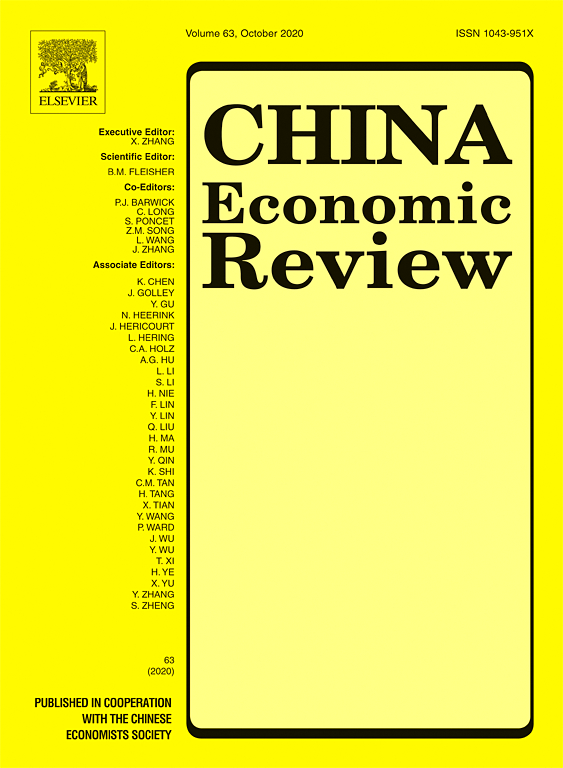
Trade Effects of Silver Price Fluctuations in 19th-Century China: A Macro Approach
in: China Economic Journal, 2020
Abstract
We assess the role of silver price fluctuations in Chinese trade and GDP during the late Qing dynasty, when China still had a bimetallic (silver/copper) monetary system, in which silver was mostly used for international trade. Using a structural VAR (SVAR) with blockwise recursive identification, we identify the impact of silver price shocks on the Chinese economy from 1867, when trade data became available, to 1910, one year before the Qing dynasty collapsed. We find that silver price shocks had a sizable impact on both imports and exports but only a very minor effect on the trade balance, only a marginal impact on growth, and almost no effect on domestic prices. Stronger effects were partly mitigated by inelastic export quantities. Generally, the effect of silver price shocks, while considerable, was only short-lived, displaying no persistence in either direction. We find that the bimetallic system in Qing China might have mitigated a potential positive effect of silver depreciation but did not reverse the effect, which – contrary to claims made in the previous literature – was responsible for neither the worsening trade balance nor the inflation and the quickly increasing imports that occurred during our sample period.
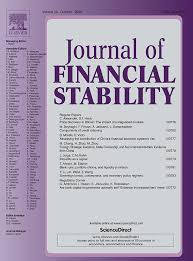
Does Machine Learning Help us Predict Banking Crises?
in: Journal of Financial Stability, December 2019
Abstract
This paper compares the out-of-sample predictive performance of different early warning models for systemic banking crises using a sample of advanced economies covering the past 45 years. We compare a benchmark logit approach to several machine learning approaches recently proposed in the literature. We find that while machine learning methods often attain a very high in-sample fit, they are outperformed by the logit approach in recursive out-of-sample evaluations. This result is robust to the choice of performance metric, crisis definition, preference parameter, and sample length, as well as to using different sets of variables and data transformations. Thus, our paper suggests that further enhancements to machine learning early warning models are needed before they are able to offer a substantial value-added for predicting systemic banking crises. Conventional logit models appear to use the available information already fairly efficiently, and would for instance have been able to predict the 2007/2008 financial crisis out-of-sample for many countries. In line with economic intuition, these models identify credit expansions, asset price booms and external imbalances as key predictors of systemic banking crises.
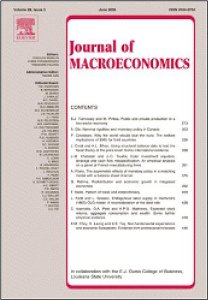
On the Empirics of Reserve Requirements and Economic Growth
in: Journal of Macroeconomics, June 2019
Abstract
Reserve requirements, as a tool of macroprudential policy, have been increasingly employed since the outbreak of the great financial crisis. We conduct an analysis of the effect of reserve requirements in tranquil and crisis times on long-run growth rates of GDP per capita and credit (%GDP) making use of Bayesian model averaging methods. Regulation has on average a negative effect on GDP in tranquil times, which is only partly offset by a positive (but not robust effect) in crisis times. Credit over GDP is positively affected by higher requirements in the longer run.
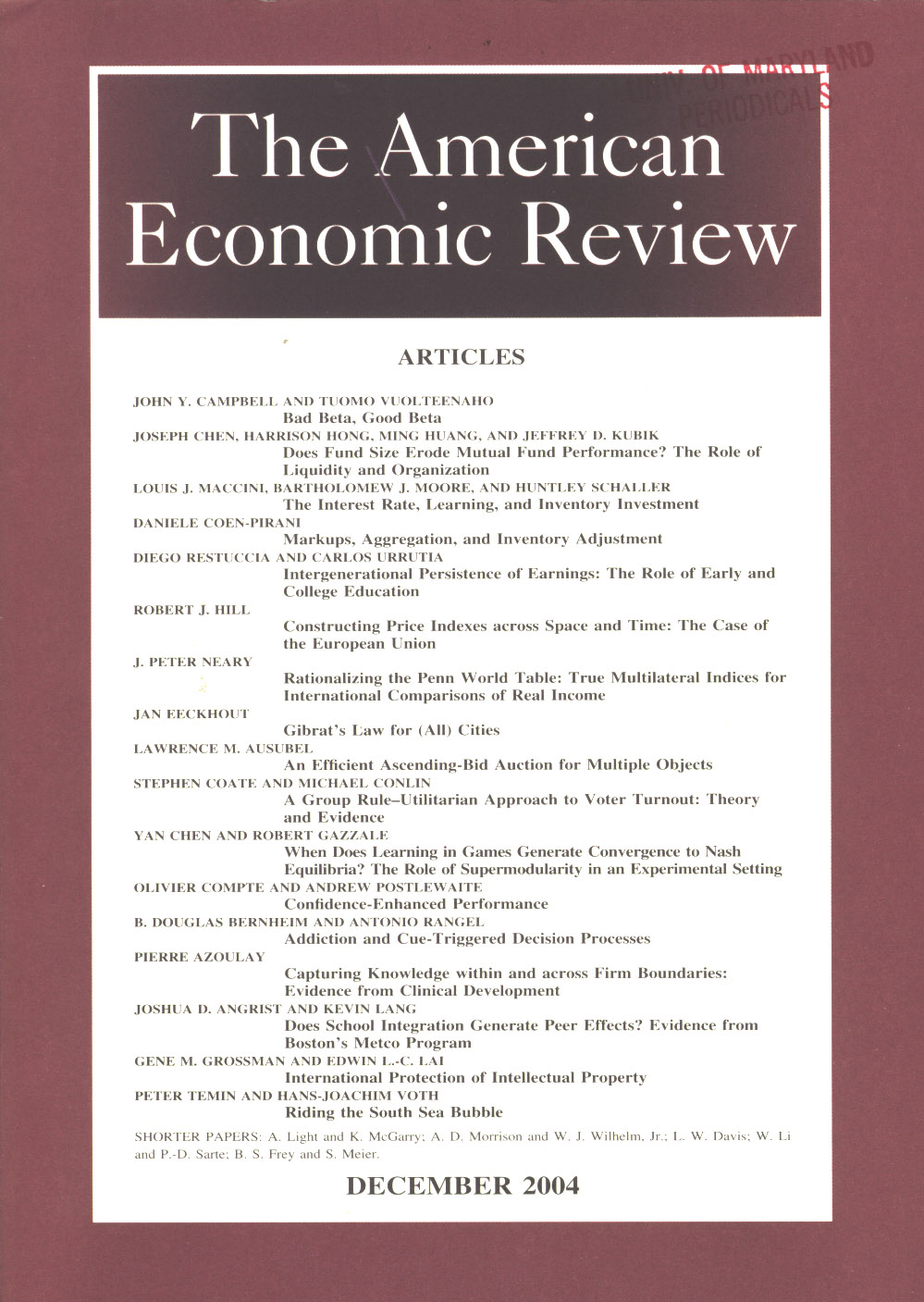
Structural Interpretation of Vector Autoregressions with Incomplete Identification: Revisiting the Role of Oil Supply and Demand Shocks
in: American Economic Review, No. 5, 2019
Abstract
Traditional approaches to structural vector autoregressions (VARs) can be viewed as special cases of Bayesian inference arising from very strong prior beliefs. These methods can be generalized with a less restrictive formulation that incorporates uncertainty about the identifying assumptions themselves. We use this approach to revisit the importance of shocks to oil supply and demand. Supply disruptions turn out to be a bigger factor in historical oil price movements and inventory accumulation a smaller factor than implied by earlier estimates. Supply shocks lead to a reduction in global economic activity after a significant lag, whereas shocks to oil demand do not.
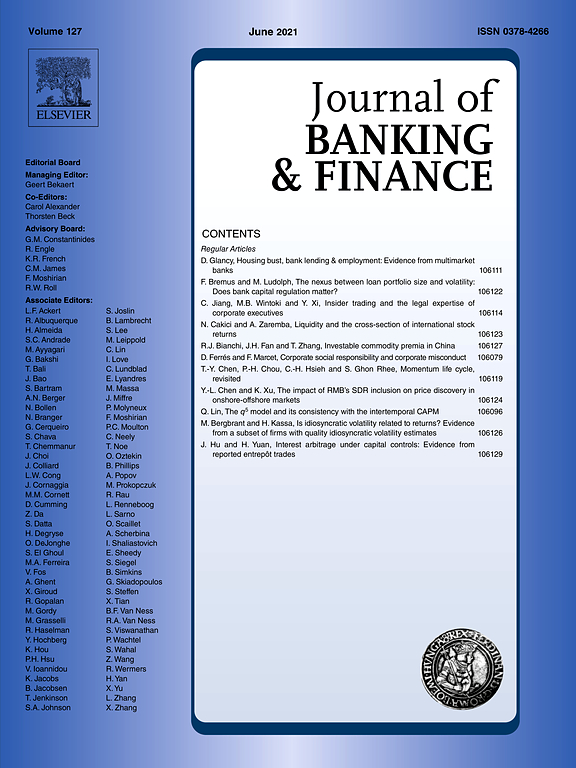
The Joint Dynamics of Sovereign Ratings and Government Bond Yields
in: Journal of Banking and Finance, 2018
Abstract
Can a negative shock to sovereign ratings invoke a vicious cycle of increasing government bond yields and further downgrades, ultimately pushing a country toward default? The narratives of public and political discussions, as well as of some widely cited papers, suggest this possibility. In this paper, we will investigate the possible existence of such a vicious cycle. We find no evidence of a bad long-run equilibrium and cannot confirm a feedback loop leading into default as a transitory state for all but the very worst ratings. We use a bivariate semiparametric dynamic panel model to reproduce the joint dynamics of sovereign ratings and government bond yields. The individual equations resemble Pesaran-type cointegration models, which allow for valid interference regardless of whether the employed variables display unit-root behavior. To incorporate most of the empirical features previously documented (separately) in the literature, we allow for different long-run relationships in both equations, nonlinearities in the level effects of ratings, and asymmetric effects in changes of ratings and yields. Our finding of a single good equilibrium implies the slow convergence of ratings and yields toward this equilibrium. However, the persistence of ratings is sufficiently high that a rating shock can have substantial costs if it occurs at a highly speculative rating or lower. Rating shocks that drive the rating below this threshold can increase the interest rate sharply, and for a long time. Yet, simulation studies based on our estimations show that it is highly improbable that rating agencies can be made responsible for the most dramatic spikes in interest rates.
Working Papers
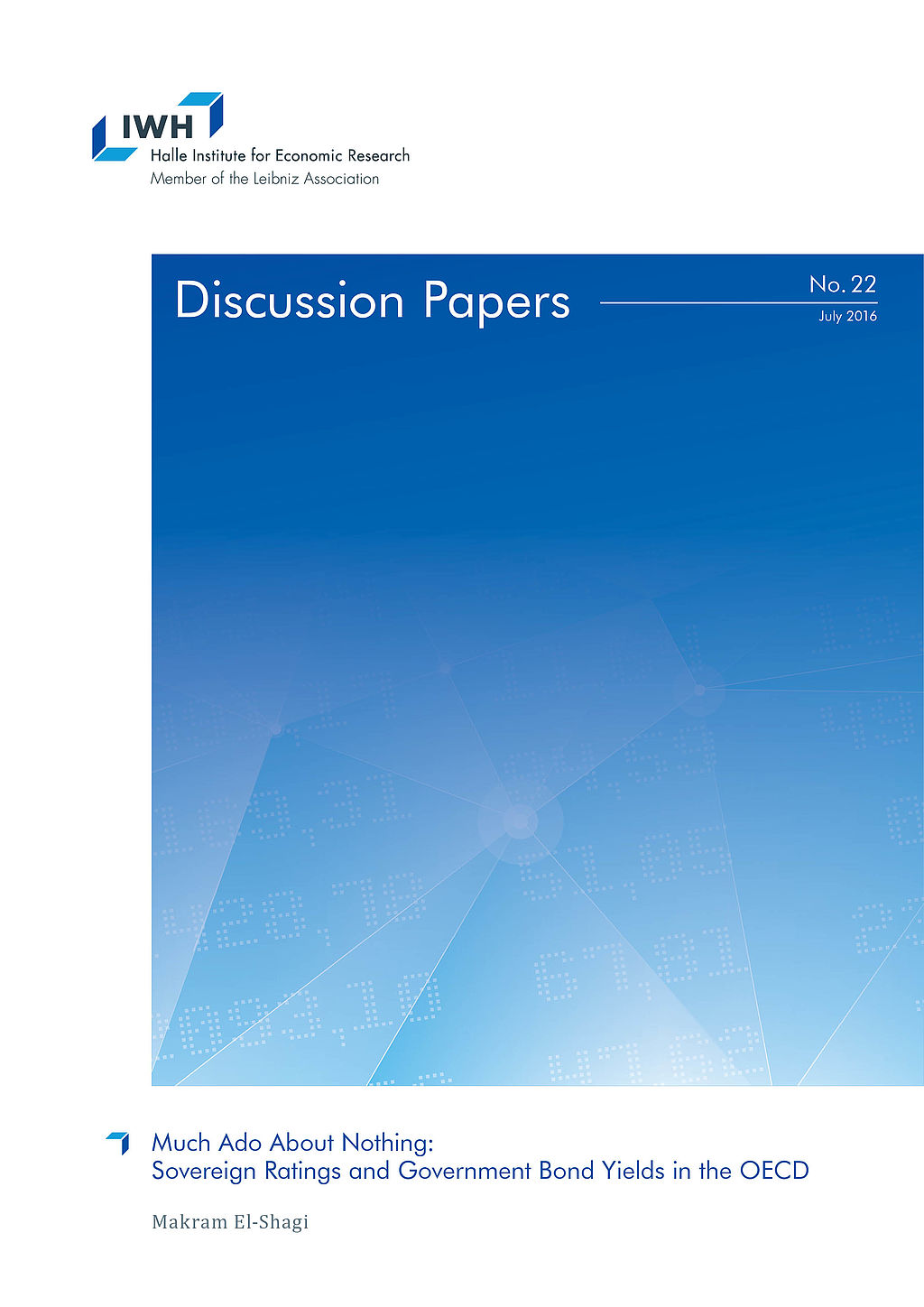
Much Ado About Nothing: Sovereign Ratings and Government Bond Yields in the OECD
in: IWH Discussion Papers, No. 22, 2016
Abstract
In this paper, we propose a new method to assess the impact of sovereign ratings on sovereign bond yields. We estimate the impulse response of the interest rate, following a change in the rating. Since ratings are ordinal and moreover extremely persistent, it proves difficult to estimate those impulse response functions using a VAR modeling ratings, yields and other macroeconomic indicators. However, given the highly stochastic nature of the precise timing of ratings, we can treat most rating adjustments as shocks. We thus no longer rely on a VAR for shock identification, making the estimation of the corresponding IRFs well suited for so called local projections – that is estimating impulse response functions through a series of separate direct forecasts over different horizons. Yet, the rare occurrence of ratings makes impulse response functions estimated through that procedure highly sensitive to individual observations, resulting in implausibly volatile impulse responses. We propose an augmentation to restrict jointly estimated local projections in a way that produces economically plausible impulse response functions.
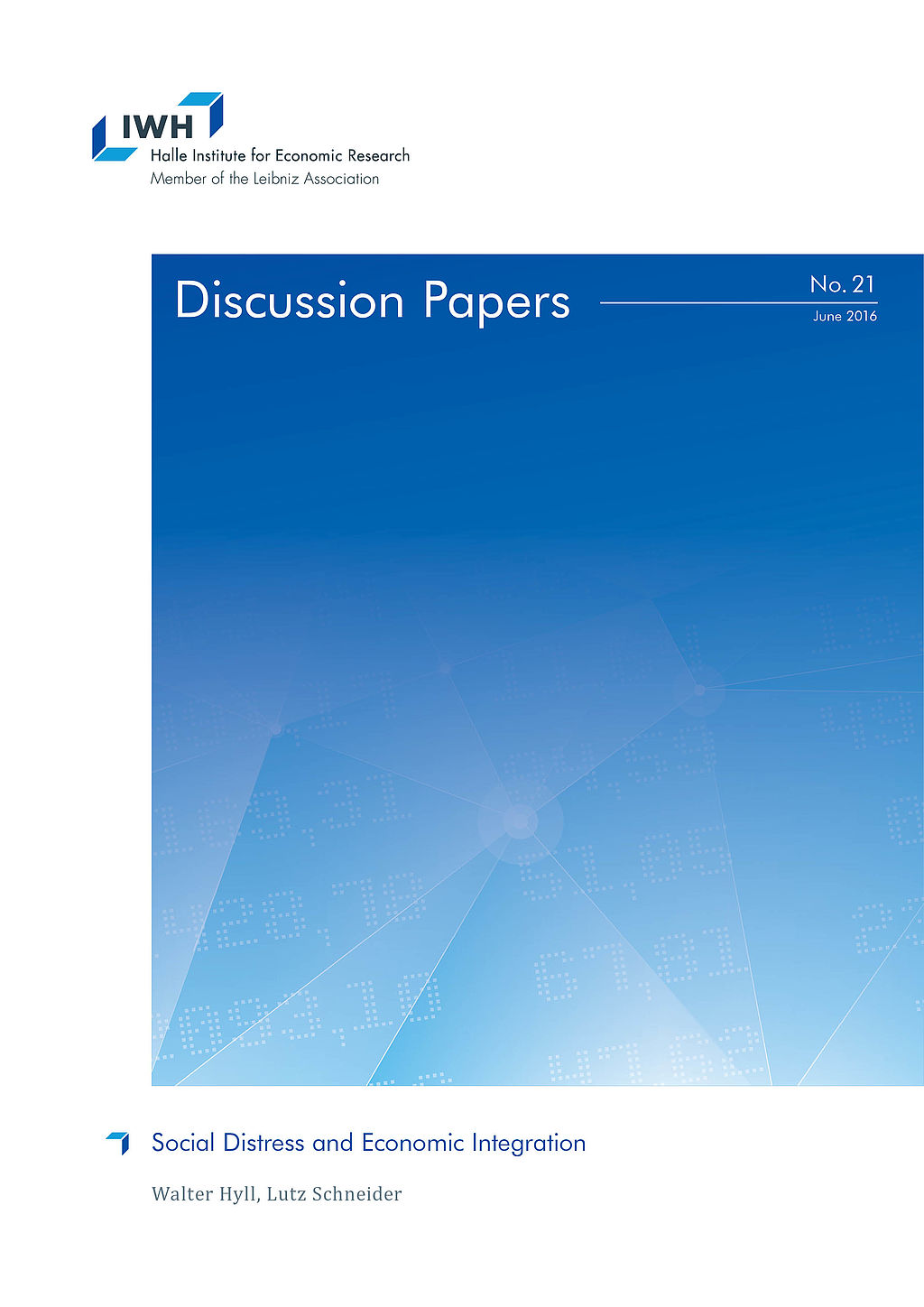
Exit Expectations and Debt Crises in Currency Unions
in: IWH Discussion Papers, No. 18, 2015
Abstract
Membership in a currency union is not irreversible. Exit expectations may emerge during sovereign debt crises, because exit allows countries to reduce their liabilities through a currency redenomination. As market participants anticipate this possibility, sovereign debt crises intensify. We establish this formally within a small open economy model of changing policy regimes. The model permits explosive dynamics of debt and sovereign yields inside currency unions and allows us to distinguish between exit expectations and those of an outright default. By estimating the model on Greek data, we quantify the contribution of exit expectations to the crisis dynamics during 2009 to 2012.

Flight Patterns and Yields of European Government Bonds
in: IWH Discussion Papers, No. 10, 2013
Abstract
The current European Debt Crisis has led to a reinforced effort to identify the sources of risk and their influence on yields of European Government Bonds. Until now, the potentially nonlinear influence and the theoretical need for interactions reflecting flight-to-quality and flight-to-liquidity has been widely disregarded. I estimate government bond yields of the Euro-12 countries without Luxembourg from May 2003 until December 2011. Using penalized spline regression, I find that the effect of most explanatory variables is highly nonlinear. These nonlinearities, together with flight patterns of flight-to-quality and flight-to-liquidity, can explain the co-movement of bond yields until September 2008 and the huge amount of differentiation during the financial and the European debt crisis without the unnecessary assumption of a structural break. The main effects are credit risk and flight-to-liquidity, while the evidence for the existence of flight-to-quality and liquidity risk (the latter measured by the bid-ask spread and total turnover of bonds) is comparably weak.















